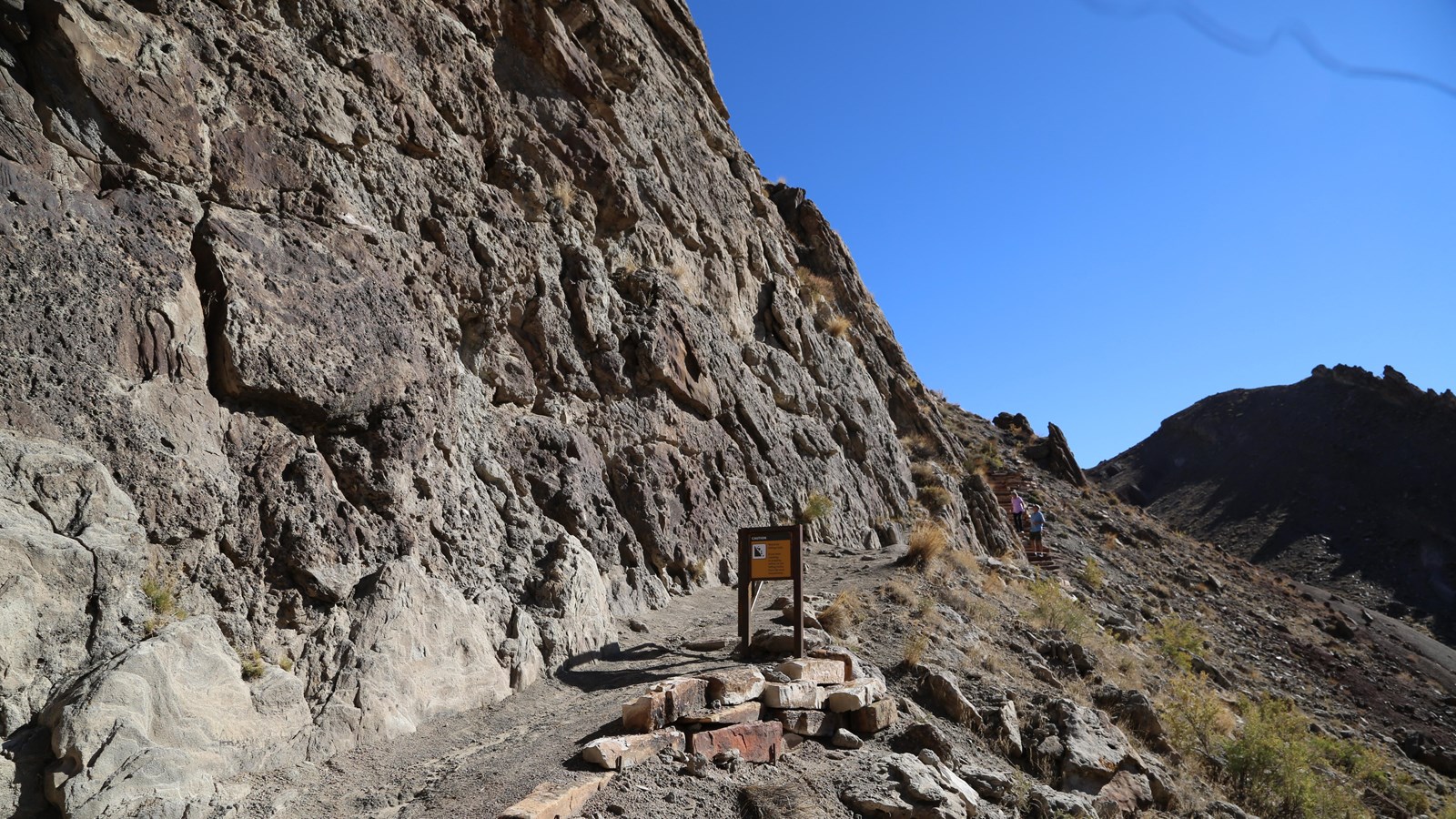Last updated: July 4, 2022
Place
Morrison Formation

NPS Photo/Dan Johnson
Quick Facts
Amenities
1 listed
Scenic View/Photo Spot
Each step leads you through rock layers with different colors, textures, and fossils. Sometimes these differences are subtle, sometimes striking. Most of the Morrison Formation is mudstone and clay, but watch for the trail spur that follows a sandstone cliff. This part of the Morrison Formation is made up of river-deposited sand and gravel. Based on radiometric dating from volcanic ash, in older and younger layers on either side of the sandstone wall, this layer is estimated to be about 151 million years old. Fossil fragments of dinosaurs are embedded in the cliff along with impressions of freshwater clams. The Morrison Formation trail spur follows the same sandstone layer that is exposed in the Quarry Exhibit Hall. However, this cliff has not been worked on by paleontologists to make the bones easier to see. The first fossils along the spur are fragments that are shiny and dark orange in color. Some have a spongey-looking interior which contained bone marrow. Their texture is generally smooth and their size ranges from 1/2 inch to 10 inches in diameter.
As you hike along the cliff, the quality and size of the fossil bones increases. Just past the mid-point of the spur, the trail dips a few feet. From here, look up about 10 feet on the cliff face to see eight vertebrae. At the very end of the spur, a large femur rests in the rock. Sharp eyes can find more bones, depending on the angle of the sun. More than eleven species of dinosaurs have been discovered in the Morrison Formation within the monument. They range in size from about seven inches to nearly 100 feet, with some sauropods exceeding 50,000 pounds. New research on non-dinosaur fossils such as small animals, plant remains, pollen, and insect trackways tell us more about the environment in which these animals lived. Based on this research, scientists believe that around 150 million years ago, the area was semi-arid and warm, with year-round streams. Ferns dominated the plant life, along with conifers, ginkgo trees, tree ferns and horsetail rushes.
When you return to the main trail, you return to the mudstone and clay layers of the Morrison Formation. Soon you will leave the Jurassic period and enter the Cretaceous, marked by a brown sandstone in the Cedar Mountain Formation. A species of sauropod named Abydosaurus mcintoshii was found during the 1990s in this formation in the monument, proving that paleontologists still have much left to discover.
As you hike along the cliff, the quality and size of the fossil bones increases. Just past the mid-point of the spur, the trail dips a few feet. From here, look up about 10 feet on the cliff face to see eight vertebrae. At the very end of the spur, a large femur rests in the rock. Sharp eyes can find more bones, depending on the angle of the sun. More than eleven species of dinosaurs have been discovered in the Morrison Formation within the monument. They range in size from about seven inches to nearly 100 feet, with some sauropods exceeding 50,000 pounds. New research on non-dinosaur fossils such as small animals, plant remains, pollen, and insect trackways tell us more about the environment in which these animals lived. Based on this research, scientists believe that around 150 million years ago, the area was semi-arid and warm, with year-round streams. Ferns dominated the plant life, along with conifers, ginkgo trees, tree ferns and horsetail rushes.
When you return to the main trail, you return to the mudstone and clay layers of the Morrison Formation. Soon you will leave the Jurassic period and enter the Cretaceous, marked by a brown sandstone in the Cedar Mountain Formation. A species of sauropod named Abydosaurus mcintoshii was found during the 1990s in this formation in the monument, proving that paleontologists still have much left to discover.
